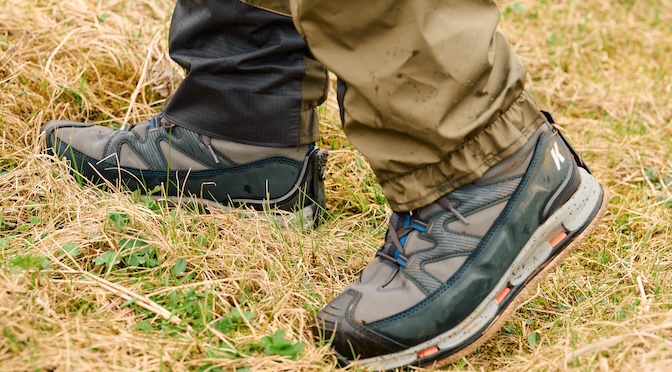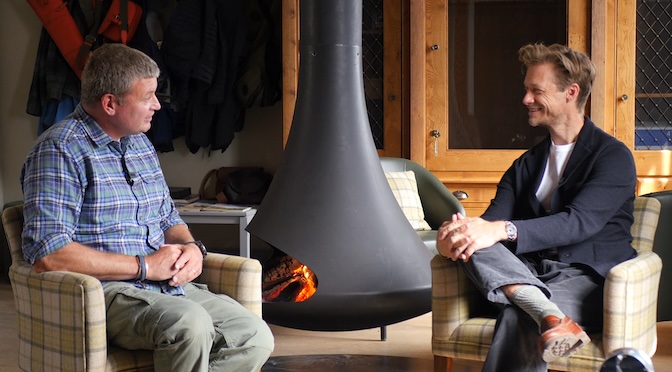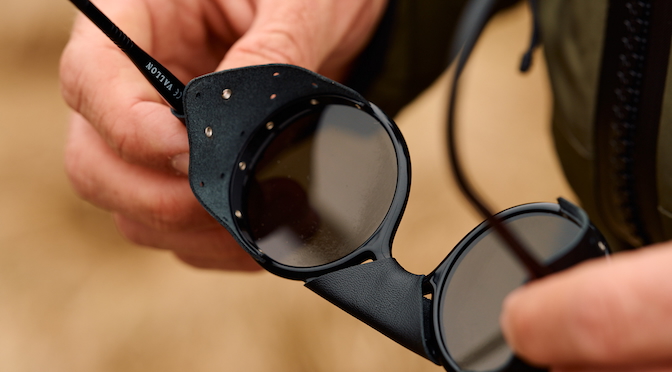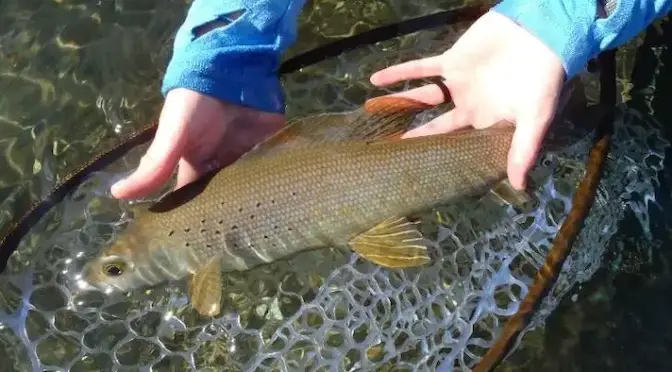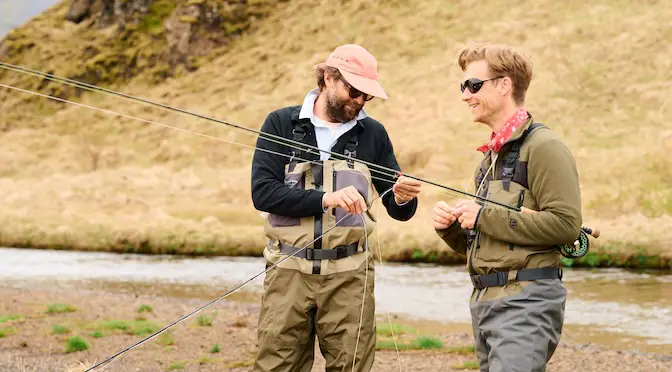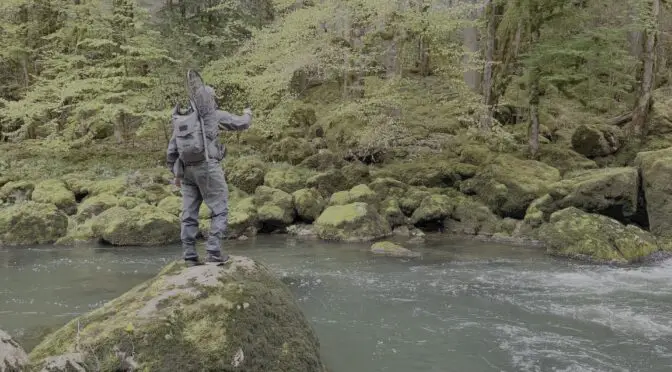Last updated on January 10th, 2024.
- On the Water with the Korkers Bantam Lite - June 26, 2025
- How to Find Trout in Rivers & Streams Anywhere - June 13, 2025
- Educating the Next Generation of Salmon Anglers - June 4, 2025
Iceland’s famously pristine waters and marine life, among them wild salmon stocks, are at risk from open net pen farming.
“This is Iceland’s national treasure, its legacy to future generations. People from all over the world escape to this remote, untouched island to experience its unspoilt nature, myself included. It would be tragic if the country went the way of Norway and Scotland, which have both seen incredible environmental devastation from salmon farms,” says Chad Pike, Chair of NASF US. “I call this type of farming ‘uncontained aquaculture’ because open nets allowing tons of raw waste, chemical-laced feed, and disease to flow out of high-density pens into the open waters around them.”
We spoke to Fridleifur Gudmundsson, Chair of NASF Iceland and Evlar Fridriksson, member of NASF Iceland, about the dangers of open net pen farming in Iceland, how the global hunger for salmon can be met and what you can do against uncontained aquaculture in Iceland.
Why is uncontained aquaculture harmful?
Gudmundsson: Uncontained aquaculture poses three grave threats to the environment and wild fish stocks: pollution, disease and lice, and genetic contamination.
Pollution: Thousands of salmon are grown in crowded net pens, fed meal made from soybeans, ground-up feathers, genetically-modified yeast, and chicken fat—a diet rich in chemicals, drugs, and dyes. This mixes with concentrated fish feces and falls through nets, smothering and contaminating aquatic life.
Lice & disease: High densities of trapped fish are vulnerable to infestation by disease and parasites. Sea lice is the biggest threat. They feed on the mucus, blood, and skin of salmon, eating fins, eroding skin, and causing constant bleeding and deep open wounds— even death. These lice are typically removed before coming to market, so consumers don’t even know their food was infested. They also attack wild smolt and salmonids migrating to and from the sea.
Genetic contamination: Some farmed salmon inevitably escape their net pens. When these fish breed with wild salmon, they create hybrid offspring that are ill-equipped to survive. Wild eggs fertilized by farmed salmon equal lost eggs. This is the largest threat to wild stocks and poses a threat to the genetic integrity that has evolved over thousands of years. Nobody has the right to do that for financial gain.
Has uncontained aquaculture worked elsewhere?
Fridriksson: Everywhere there’s been open net pen farming, you see impacts on wild salmon populations. By its nature, it’s really impossible for it to “work” from an environmental perspective, because it allows producers to literally dump tons of waste and chemicals into the open water: latest figures are a ½ ton of waste for every ton of salmon produced. Sea lice infestations, which are common even at lower stocking densities, spread to the outside environment as well, attacking smolt on their migration to sea.
Uncontained aquaculture only ‘works’ for producers, large foreign-owned multinational corporations who use it to cheaply grow fish at the expense of the public commons.
What is at stake in Iceland regarding wild Atlantic salmon?
Fridriksson: Iceland has one of the last remaining robust North Atlantic salmon spawning stock in the world. We work so hard in this country to manage our rivers, setting strict limits on the amount of rods allowed on any one river, monitoring and enforcing it with vigor… As Chad (Pike) said, it’s not only a national treasure, it’s also part of our international reputation and legacy. It would be unthinkable to allow these foreign companies to come in and just destroy it all.
The demand for salmon is increasing worldwide. How can this problem be addressed?
Gudmundsson: There are safer and better choices. Closed containment solutions are more environmentally friendly and do not threaten wild salmon stocks. These systems force aquaculture companies to address the pollution, disease and parasites. And because they’re closed, there are no escapes. Most importantly, they work and the solutions are being scaled up to meet the demand for salmon. Here in Iceland we have two producers, Matorka in the South and Samherji in the North. Abroad, companies like Atlantic Sapphire are building huge facilities the size of six football fields, to provide sustainable alternatives for consumers.
What can I as an individual do to prevent uncontained aquaculture in Iceland?
Fridriksson: Icelanders are just learning about this issue, but the more they know, the greater the resistance grows. Environmentalists, the culinary community, and ordinary residents are demanding a halt to any expansion of open net pen farming, and demanding a thorough environmental review and consideration of sustainable alternatives.
Gudmundsson: One key part of the solution is providing economic incentives for closed containment. Just like wind, solar power, and other new environmentally sensitive technologies, closed containment is competing in an unfair fight. It’s up to policy makers to level the playing field.
This is a tough fight and we’re up against a huge industry, with many resources. The more we can spread the message through word of mouth, social media, etc. the better. Icelanders need the support of the international community. They need your help. Share our story and let Parliament know the world is watching!
What’s the timeframe for this issue?
Gudmundsson: The bill could come out any day now and it is likely to be debated in Parliament in January 2019. So the time to let politicians know we care is now.
Can I get actively involved in the campaign?
Fridriksson: We’re always looking for new partners in the fight. Support from groups like NASF US, Patagonia, Loop, and others has really helped us since we’re a small, volunteer-run group. We welcome partners, donations, and any other form of assistance!
Ways to help:
Join the fight and sign the petition by visiting AgainstTheCurrent. Share it widely!
Educate yourself about sustainable seafood options before you go to a restaurant or grocery store. If enough consumers demand seafood that is responsibly farmed, big aquaculture companies will meet the demand by moving their production to closed containment systems.

